15 Ng. 100 Đ. Nguyễn Xiển, Thanh Xuân Nam, Thanh Xuân, Hà Nội 100000
The very name "Angkor" immediately conjures visions of the iconic, sprawling majesty of Angkor Wat or the enigmatic stone faces of the Bayon. Yet, nestled within the sprawling embrace of the Angkor Archaeological Park, lies a temple that offers a profoundly different, arguably more evocative, and undeniably immersive experience: Preah Khan. Often overshadowed by its more famous brethren, Preah Khan (meaning "Royal Sword") is a vast, largely unrestored complex, caught in a delicate, centuries-long dance between human artistry and nature's relentless reclaiming power. It is a place where gigantic trees entwine their roots with ancient stones, where crumbling corridors whisper tales of a glorious past, and where every turn reveals a vista of haunting beauty and profound historical significance.
Preah Khan stands as a testament to the raw power of nature reclaiming its own, a monumental structure caught in a slow, centuries-long embrace with the forest. It is a labyrinthine ruin that invites intrepid explorers to wander through its moss-covered galleries, clamber over its fallen blocks, and immerse themselves in a truly wild and untamed piece of history. For the discerning traveler seeking a deeper, more visceral connection to the Angkorian past, a visit to Preah Khan is not just a destination; it's an unforgettable expedition into the heart of a jungle-swallowed dream, offering a unique blend of adventure, spiritual reflection, and photographic wonder. It holds secrets of a powerful empire, a grand king, and a spiritual heart that once beat strongly within its walls.
In this comprehensive guide, we will embark on an immersive exploration of Preah Khan. We'll delve into its fascinating history, its remarkable architectural and artistic connections to the reign of Jayavarman VII, and the unique allure of its unrestored, yet partially conserved, state. Furthermore, we’ll provide you with all the practical information you need to plan your adventure, including how Golden Trail Travel can seamlessly facilitate your discovery of this captivating and adventurous Cambodian treasure, ensuring a journey that is both insightful and truly memorable.
To truly appreciate the intricate allure of Preah Khan, one must understand its pivotal role within the reign of one of the Khmer Empire's most prolific and visionary builders: King Jayavarman VII. This temple was not merely a structure; it was a profound declaration of faith, a memorial, and a vital administrative and educational hub.
Preah Khan was constructed in the late 12th century, likely around 1191 AD, by King Jayavarman VII. His reign (c. 1181–1218 CE) marked a transformative period in Khmer history, defined by both monumental construction and a profound shift in religious focus.
Responding to Catastrophe: Jayavarman VII came to power following a devastating invasion by the Cham people (from what is now central Vietnam) who sacked Angkor in 1177 CE. His victory over the Chams and subsequent rise to the throne marked a period of intense national recovery and a renewed assertion of Khmer power and identity. His temples, therefore, carry a profound message of triumph, resilience, and spiritual reassertion.
A Building Spree of Unprecedented Scale: In response to the Cham invasion and to solidify his reign, Jayavarman VII embarked on an unprecedented building program. This era saw the construction of major public works, hospitals, roads, and, most notably, a series of colossal temple complexes. These include Angkor Thom (the new capital city), the Bayon (his state temple), Ta Prohm (dedicated to his mother), and Banteay Kdei. Preah Khan stands as one of the crowning achievements of this prolific period.
The Rise of Mahayana Buddhism: Unlike previous Khmer kings who primarily patronized Hinduism (particularly the worship of Shiva or Vishnu), Jayavarman VII was a devout follower of Mahayana Buddhism. His temples reflect this shift, incorporating numerous Buddha images, Bodhisattvas (especially Lokeshvara), and Buddhist narratives in their iconography. Preah Khan, in particular, was a significant Mahayana Buddhist monastery and university.
Preah Khan's purpose was multifaceted and deeply significant, embodying the spiritual, intellectual, and political aspirations of Jayavarman VII's reign.
Dedicatory Temple for His Father: Preah Khan was primarily dedicated to Jayavarman VII's father, Dharanindravarman II, who was posthumously deified as Jayavarmesvara (meaning "King of the Jayavarmans," in the likeness of Lokeshvara, a Bodhisattva). This dedication paralleled Ta Prohm's dedication to his mother, marking a profound familial and spiritual connection for the king. The main image, a standing Lokeshvara, would have enshrined the deified image of his father.
The "Royal Sword" and Original Name: The name "Preah Khan" literally translates to "Royal Sword," which might refer to the victory over the Chams or a sacred sword housed within the temple. Its original name was likely Nagarajayashri, meaning "City of Royal Fortune," reflecting its status as a significant urban and spiritual center.
Buddhist Monastery and University: More than just a temple, Preah Khan functioned as a massive Buddhist monastery (vihara) and a prominent university. Historical inscriptions indicate that it housed an astonishing 430 subsidiary deities, supported a community of 97,840 people (including 1,000 dancers!), and engaged in the study and teaching of Buddhist scriptures and other knowledge. It was a bustling intellectual and spiritual hub, a true city within itself. This educational function makes it distinct from many other temples.
Strategic Location: Its location north of Angkor Thom, on the site of Jayavarman VII's victory over the Chams, further cemented its symbolic importance as a triumph over adversity and a foundation for the new era. It was also situated on an ancient royal highway that connected it to other important sites, indicating its broader administrative and strategic role within the empire.
Like many Angkorian temples, Preah Khan eventually succumbed to a combination of factors:
Shifting Capitals and Religious Focus: Subsequent kings, particularly those who reverted to Hinduism, likely withdrew support and resources from Buddhist establishments.
Siam Invasions: The recurring invasions by the Siamese (Thai) kingdom in the 14th and 15th centuries led to the eventual abandonment of Angkor and its surrounding temples.
Jungle Encroachment: Over centuries, the relentless power of the tropical jungle took hold. Tree roots wrapped around walls, foundations shifted, and structures collapsed under the weight of vegetation and the force of monsoon rains.
The current state of romantic ruin, where nature and architecture are inextricably intertwined, is precisely what makes Preah Khan so captivating today. Unlike Angkor Wat, which has undergone extensive restoration, much of Preah Khan has been stabilized rather than rebuilt, allowing visitors to witness the raw, powerful beauty of a lost civilization embraced by the wild.
Preah Khan's vastness and intricate layout are remarkable, embodying the characteristic features of Jayavarman VII's architectural style while possessing unique elements that set it apart. Despite its state of disrepair, the temple reveals its former grandeur and rich artistic details.
Preah Khan is one of the largest temple complexes in Angkor, sprawling over approximately 56 hectares (138 acres) within its outer wall. Its design is a classic example of the concentric gallery plan, leading inwards to the central sanctuary.
Four Enclosing Walls: The temple is surrounded by four successive rectangular enclosing walls, each demarcating different zones and purposes.
Outer Wall (Fourth Enclosure): This immense laterite wall (approximately 800m x 700m), features grand entrance gopuras (gates) at each cardinal point. Along its perimeter, over 72 stone garudas (mythical half-human, half-eagle beings) stand guard, holding up nagas (multi-headed serpents), a powerful symbol of Khmer mythological cosmology representing the churning of the Ocean of Milk. Many of these garudas are still remarkably well-preserved. This outer wall originally enclosed a city, complete with houses, roads, and a large population connected to the monastery.
Third Enclosure: Marks the edge of the main temple complex, containing libraries and subsidiary shrines.
Second Enclosure: Contains a labyrinth of interconnected galleries, courtyards, and smaller shrines. This is where the most dramatic interplay of stone and root can be found.
First Enclosure (Inner Sanctuary): The innermost enclosure, leading to the central shrine.
Causeways and Bridges: Long causeways, often flanked by the iconic naga balustrades (and sometimes smaller garudas), lead from the outer gopuras towards the main temple entrances. These causeways often cross the now-dry moats, symbolizing bridges between the earthly and divine realms.
Each of the four cardinal entrances to Preah Khan is a monumental gopura, though the western and eastern ones are particularly prominent and well-preserved.
East Gate (Main Entrance): Traditionally the main ceremonial entrance, leading to the central sanctuary. It features a long causeway, naga balustrades, and elaborate carvings.
West Gate: Equally impressive, often preferred by visitors for its photogenic quality with the iconic Garudas and the path through the jungle.
North and South Gates: While present, these are less grand and often more overgrown, offering a more adventurous entry point.
Preah Khan boasts several architectural elements that are either rare or unique within the Angkorian complex:
The "Hall of Dancers" (East Entrance): Located just inside the eastern gopura, this long, columned hall is a magnificent example of early Buddhist temple architecture. Its walls feature carved apsaras (celestial dancers) in various poses, suggesting its use for ceremonial dances or performances. The interplay of light and shadow through its numerous doorways creates a captivating atmosphere.
The Two-Story Building (East Entrance): A truly unique structure within the Angkor complex, this well-preserved two-story stone building stands near the eastern entrance. Its exact function remains debated among scholars. Theories suggest it could have been a granary (storage for rice), a library for sacred texts, or perhaps a combination of both. Its relatively intact state and distinct architecture make it a fascinating study for visitors.
The Circular Laterite Structure (North of the Central Sanctuary): Another enigmatic feature is a large, circular, tiered laterite structure located north of the central shrine. Its purpose is highly debated; some speculate it was a stupa (a Buddhist reliquary mound), a granary, or even a precursor to the elaborate concentric designs seen in later Hindu temples. Its unusual form sets it apart from typical Angkorian structures.
Central Sanctuary: At the very heart of the temple complex is the central sanctuary, which would have originally housed the main Lokeshvara image (the deified form of Jayavarman VII's father). This area is often heavily collapsed due to its central position and the weight of the structure, creating a maze of fallen blocks that add to the adventurous exploration. While primarily Buddhist, the central sanctuary and surrounding galleries also show clear evidence of Hindu influence and later defacement, reflecting the religious shifts of subsequent reigns.
Despite the pervasive growth of vegetation and centuries of exposure, flashes of Preah Khan's original artistic brilliance can still be found.
Buddhist Iconography: As a Mahayana Buddhist temple, Preah Khan is adorned with numerous carvings of Buddha images, Bodhisattvas (especially Avalokiteshvara/Lokeshvara), and scenes from Buddhist mythology. Many of the Buddha images were deliberately defaced or destroyed during the Hindu revival that followed Jayavarman VII's reign, but their outlines and remaining details are still visible, telling a poignant story of religious conflict and transformation.
Apsaras and Devatas: Delicate carvings of apsaras (celestial dancers) and devatas (female deities) adorn lintels and wall panels, particularly in the Hall of Dancers, showcasing the exquisite artistry of the Khmer sculptors.
Hindu Elements: Reflecting the syncretic nature of Khmer religion, Hindu deities and mythological scenes (like Vishnu on Garuda, or various devas and asuras) are also present, often alongside or subtly integrated with Buddhist iconography.
Garuda and Naga Motifs: The omnipresent Garuda and Naga motifs are powerful symbols of cosmic order and protection, appearing on balustrades, wall carvings, and guarding the outer gopuras.
Exploring Preah Khan is an archaeological treasure hunt, where every turn might reveal a forgotten masterpiece, adding to the temple's captivating mystique and offering a tangible connection to the spiritual and artistic ambitions of an ancient empire.
Visiting Preah Khan is less of a typical temple visit and more of an adventurous, almost spiritual, exploration. Its largely unrestored nature invites a different kind of engagement, appealing to those who love discovery, photography, and a deep connection with historical ruins reclaimed by the wild.
Preah Khan's vastness and intricate layout can feel like a labyrinth, inviting a sense of exploration and discovery with every step.
Less Manicured, More Authentic: Unlike the meticulously restored sections of Angkor Wat, Preah Khan embraces its ruined state. While some areas have wooden walkways and pathways for accessibility and safety, large sections of the temple remain a chaotic yet beautiful tangle of fallen blocks, crumbling walls, and encroaching vegetation.
Clambering and Weaving: For the more adventurous, the opportunity to clamber over massive sandstone blocks, squeeze through narrow, dimly lit passages, and weave your way through overgrown corridors is a major draw. It offers a tactile and visceral experience that is often absent at more manicured sites. Each fallen lintel or displaced column tells a story of centuries of decay and the relentless power of nature.
A Sense of Personal Exploration: With fewer crowds than Angkor Wat or Bayon, Preah Khan allows for a more personal and reflective exploration. You can often find quiet corners to sit, contemplate the history, and simply absorb the profound atmosphere without constant distractions. This creates a powerful feeling of being an early explorer, uncovering secrets.
Strategic Navigation: A good map or a knowledgeable guide is invaluable for navigating the complex without getting lost and for ensuring you see all the significant features, from the two-story building to the Hall of Dancers.
Preah Khan is a paradise for photographers, offering endless opportunities for stunning and evocative images that capture the unique interplay of ancient stone and rampant nature.
Intertwined Giants: The most iconic photographic subjects are the massive trees (especially strangler figs and silk-cotton trees) whose roots have wrapped themselves around walls, through doorways, and over roofs, creating breathtaking organic sculptures. These natural embraces are both destructive and paradoxically stabilizing, holding some sections of the temple together.
Light and Shadow Play: The partial collapse of roofs and walls allows sunlight to filter into the dark interiors, creating dramatic shafts of light and shadow that highlight textures, carvings, and the sheer scale of the ruins. Early morning and late afternoon "golden hour" light is particularly magical.
Unique Perspectives: The chaotic yet artistic nature of the ruins allows for unique angles, compositions, and macro shots of moss, lichen, and intricate details that are impossible to achieve at more symmetrical and restored temples. Every doorway frames a new, compelling vista.
Eerie Beauty: The pervasive sense of ancient decay, combined with the vibrant life of the jungle, creates an atmosphere of eerie beauty that is incredibly photogenic.
Despite its adventurous nature, Preah Khan also offers moments of profound serenity. Its relative isolation from the central Angkor Thom circuit means significantly fewer crowds, allowing for a more reflective and personal experience.
Escape the Hustle: If you've felt overwhelmed by the throngs at other Angkorian sites, Preah Khan offers a tranquil retreat where you can truly connect with the ancient stones without constant jostling. The sounds of the jungle replace the chatter of tourists.
Awe and Contemplation: The sheer scale of the temple, combined with the overwhelming force of nature reclaiming it, inspires a deep sense of awe and wonder. It prompts reflection on the transient nature of human endeavors and the enduring power of the natural world. It's a place where history feels tangible and alive.
Spiritual Resonance: As a former Buddhist monastery and university, Preah Khan still holds a palpable spiritual resonance. You can imagine the thousands of monks, scholars, and pilgrims who once walked its corridors, seeking enlightenment and knowledge.
A visit to Preah Khan is not just about seeing an ancient temple; it's about feeling its history, breathing its jungle air, and immersing yourself in a landscape where time seems to flow differently, allowing you to witness the raw, untamed beauty of Cambodia's profound past.
Unlike Angkor Wat, which has undergone extensive reconstruction, Preah Khan stands out for its unique approach to conservation. The philosophy here is not to rebuild to its original glory, but to stabilize the existing ruins, allowing the powerful aesthetic of nature's reclamation to endure.
The preservation efforts at Preah Khan have largely been spearheaded by the World Monuments Fund (WMF), an international non-profit organization dedicated to preserving cultural heritage sites around the globe. Their work at Preah Khan, which began in the early 1990s, has been described as an "experiment in conservation," contrasting sharply with earlier, more extensive restoration efforts at other Angkorian temples.
Stabilization, Not Reconstruction: The primary goal of the WMF's work at Preah Khan has been to stabilize the precarious structures, prevent further collapse, and ensure safety for visitors, rather than to fully reconstruct the temple to its original state. This approach respects the "ruined" aesthetic that has become integral to Preah Khan's identity and charm.
Preserving the Interplay of Nature and Stone: The WMF recognized that the intertwined roots of the massive trees and the crumbling stones are what make Preah Khan so unique and evocative. Instead of removing all encroaching vegetation (which would be an impossible and perhaps undesirable task), their focus has been on carefully managing the trees – sometimes supporting them, sometimes selectively pruning them, and often reinforcing the structures that their roots hold or threaten. This delicate balance ensures the preservation of this iconic natural-architectural symbiosis.
Careful Documentation and Study: A significant part of the WMF's work involves extensive archaeological documentation, architectural studies, and research into the best practices for conserving stone monuments in a tropical environment. This scientific approach informs all their stabilization efforts.
Training and Capacity Building: The WMF has also focused on training Cambodian conservators and archaeologists, building local capacity for long-term stewardship of their heritage. This ensures that the knowledge and skills for preserving Angkorian sites remain within Cambodia.
The decision to largely leave Preah Khan in its "ruined" state, albeit carefully managed, is a deliberate aesthetic and conservation choice.
Romantic Allure: For many visitors, the appeal of Preah Khan lies precisely in its raw, unrestored condition. It evokes a powerful sense of discovery, a feeling of stepping back in time to when the early explorers first stumbled upon these jungle-choked wonders. It's a more visceral connection to history.
Historical Authenticity: The visible signs of decay, the scattered blocks, and the pervasive embrace of nature tell a story of centuries of abandonment and the relentless passage of time. This provides a more authentic and unvarnished glimpse into the processes that have shaped these ancient monuments.
Contrast with Other Temples: Preah Khan offers a valuable counterpoint to the more extensively restored temples like Angkor Wat. It allows visitors to appreciate the different philosophies of conservation and to experience the temples in varying states of preservation, each with its own unique charm.
The ongoing work at Preah Khan by the WMF and the APSARA Authority (the Cambodian governmental body responsible for managing the Angkor complex) ensures that this magnificent ruin can be safely explored and appreciated by future generations, while preserving its distinct and profoundly beautiful character as a monument reclaimed by the jungle. It is a testament to the idea that conservation can be about respecting natural processes as much as it is about rebuilding human structures.
Embarking on a journey to Preah Khan requires some practical considerations to ensure a smooth, enjoyable, and enriching experience within the vast Angkor Archaeological Park.
Within Angkor Archaeological Park: Preah Khan is located within the northern reaches of the Angkor Archaeological Park, just north of Angkor Thom.
Part of the "Grand Circuit": It is a prominent stop on the "Grand Circuit" (or "Outer Circuit") tour, which typically includes other significant temples like Neak Pean, Ta Som, East Mebon, and Pre Rup. This circuit is usually done after completing the "Small Circuit" (Angkor Wat, Angkor Thom, Ta Prohm).
Early Morning (Opening Time): Arriving right at opening time (usually around 7:30 AM) is highly recommended. You'll avoid the largest crowds, enjoy cooler temperatures, and experience the temple in soft, ethereal morning light, which is perfect for photography. The sense of solitude in the jungle is palpable.
Late Afternoon (Before Closing): Another excellent time is later in the afternoon, approximately 2-3 hours before closing. The light is again beautiful, and crowds begin to thin out. However, ensure you leave enough time to fully explore before the park closes.
Dry Season (November to May): This period offers cooler, drier weather, making walking and exploring more comfortable. The paths are less muddy, and there's less chance of rain interrupting your visit.
Wet Season (June to October): While more humid and prone to rain showers, the wet season brings lush, vibrant greenery to the surrounding jungle, making the interplay of roots and stone even more dramatic and photogenic. It can also mean fewer tourists.
Allow 1.5 to 3 Hours: Given its sprawling size and intricate layout, you should allocate at least 1.5 to 2 hours for a quick exploration, and 2.5 to 3 hours for a more thorough and leisurely visit, especially if you enjoy photography or want to delve into its various corners.
Angkor Pass Required: Preah Khan is part of the Angkor Archaeological Park, so you will need a valid Angkor Pass (1-day, 3-day, or 7-day) to enter. Purchase your pass at the official ticket office in Siem Reap before heading to the temples.
Dress Comfortably and Practically:
Clothing: Wear light, breathable clothing suitable for the tropical climate. While temple dress codes (covering shoulders and knees) are generally enforced at Angkor Wat and Bayon, they are less strictly applied at Preah Khan due to its more "ruined" state, but it's always respectful to err on the side of modesty, especially if entering active shrines.
Footwear: This is crucial. Wear sturdy, comfortable, closed-toe walking shoes or hiking sandals with good grip. You will be walking on uneven surfaces, climbing stairs, and potentially clambering over fallen blocks.
Sun Protection and Hydration: The Cambodian sun is intense. Bring a wide-brimmed hat, sunglasses, and high-SPF sunscreen. Crucially, carry plenty of bottled water; you'll be doing a lot of walking.
Insect Repellent: Given its jungle setting and partially overgrown nature, insect repellent is highly advisable, especially during early morning or late afternoon visits.
Local Guides: Consider hiring a licensed local guide. They can provide invaluable insights into Preah Khan's history, architecture, and unique features, point out hidden carvings, and help you navigate the labyrinthine complex safely and efficiently. Their stories bring the stones to life.
Photography: Preah Khan is incredibly photogenic. Bring your camera with extra batteries and memory cards. Respect other visitors and don't block pathways for extended periods. Drones may have restrictions; check park regulations beforehand.
Respectful Conduct: Do not touch or climb on fragile carvings. Be mindful of your steps to avoid damaging the ruins. Do not litter. Help preserve this precious heritage.
Accessibility: While some pathways are relatively clear, many areas involve climbing over uneven surfaces. Wooden walkways have been installed in key sections to improve accessibility for a broader range of visitors, but adventurous exploration still requires good mobility.
Tuk-tuk: The most common and popular way to get around the Angkor Park. A tuk-tuk driver can be hired for a full day to take you around the Grand Circuit.
Car with Driver: For greater comfort (air conditioning) and speed, hiring a private car with a driver is an excellent option, especially if the weather is very hot or during the wet season.
Electric Bicycle (E-bike): For the independent traveler, E-bikes are available for rent in Siem Reap. This offers flexibility to explore at your own pace but requires navigating yourself.
Bicycle: For very fit and adventurous cyclists, it's possible to cycle to Preah Khan, but the distances within the Grand Circuit can be significant, especially in the heat.
A well-planned trip to Preah Khan offers a profound and memorable experience, transporting you to a realm where nature and history intertwine in spectacular fashion, allowing you to witness the enduring spirit of the Khmer Empire.
For an effortless, enriching, and insightful exploration of Preah Khan Temple and the broader Angkor Archaeological Park, Golden Trail Travel is your ideal partner. We specialize in crafting bespoke Cambodian adventures, ensuring you delve deep into the country's historical and cultural wonders with unparalleled comfort, profound insight, and unwavering commitment to responsible tourism.
Golden Trail Travel understands the unique allure and logistical considerations of visiting a magnificent yet sprawling ruin like Preah Khan. Our meticulously planned tours handle all aspects, from comfortable, air-conditioned transportation from your accommodation in Siem Reap to securing your Angkor Pass (if needed) and providing access to expert local guides who illuminate the temple's fascinating history, reveal its hidden architectural secrets, and help you navigate its intriguing ruins safely and respectfully. We prioritize authentic experiences, ethical tourism, and your absolute comfort and safety.
Why choose Golden Trail Travel for your Preah Khan expedition?
Expertly Designed Itineraries: We craft tours that seamlessly integrate Preah Khan into a comprehensive exploration of the Angkor Grand Circuit, or customize a specific itinerary focusing on your interests. Our schedules are designed to maximize your time, allowing for thorough exploration without feeling rushed.
Knowledgeable and Passionate Local Guides: Our guides are not just drivers; they are licensed, highly experienced, and deeply passionate about Cambodian history and culture. They bring the ancient stones of Preah Khan to life with captivating stories, in-depth historical context, and invaluable insights into its unique architectural features and the spiritual significance of its carvings. They can also point out the best photographic opportunities and ensure safe navigation through the ruins.
Seamless and Stress-Free Logistics: We handle all transportation, ensuring a comfortable, reliable, and efficient journey to and from Preah Khan, navigating the park's routes with ease. This allows you to relax and fully immerse yourself in the awe-inspiring atmosphere of the temple.
Authentic and Immersive Experience: Our tours are designed to provide a genuine and profound experience of Preah Khan's raw beauty and historical significance. We encourage respectful exploration and provide opportunities to connect with the temple's unique "jungle-embraced" atmosphere, truly embodying the spirit of discovery.
Commitment to Responsible Tourism: At Golden Trail Travel, we are deeply committed to sustainable and ethical tourism practices. Our tours operate with the utmost respect for the ancient monuments, the local environment, and the communities surrounding the park. We ensure that your visit contributes positively to the preservation of Cambodia's invaluable heritage.
Customer-Centric Approach and Flexibility: Your comfort, safety, and ultimate satisfaction are our absolute top priorities. We offer flexibility to cater to your specific interests, pace, and preferences, whether you're a history enthusiast, a keen photographer, or simply seeking a tranquil escape into ancient wonders.
Don't miss the opportunity to explore the untamed beauty and ancient secrets of Preah Khan Temple. Allow us to guide you to this remarkable place, where the whispers of the past merge with the vibrant pulse of the jungle, and where every stone tells a story of an empire's glory and its enduring legacy. Visit our website today at https://goldentrailtravel.com/ to explore our Angkor Park tour options that include Preah Khan and book your unforgettable Cambodian adventure into a truly majestic past!
Hear what our esteemed customers have to say about their unforgettable Preah Khan experiences with Golden Trail Travel:
"Our visit to Preah Khan with Golden Trail Travel was absolutely breathtaking. It felt like stepping into an 'Indiana Jones' movie! The way the trees intertwine with the ruins is just mesmerizing. Our guide was incredibly knowledgeable, bringing the history of King Jayavarman VII to life. Definitely a highlight of our Angkor trip!" — Sarah L., Australia
"We wanted to see more than just Angkor Wat, and Preah Khan was the perfect choice. It's so atmospheric and less crowded. Golden Trail Travel arranged a fantastic tour, making sure we had enough time to explore every corner. The two-story building was so unique! A truly immersive historical experience." — David & Emma K., United Kingdom
"As a photographer, Preah Khan was an absolute dream. The play of light and shadow, the ancient stones reclaimed by nature – endless opportunities for stunning shots. Golden Trail Travel understood our needs perfectly, ensuring we hit the temple at the best time for light. Their guides are top-notch." — Amelia R., USA
"I loved the sense of adventure at Preah Khan, clambering over the blocks and discovering hidden passages. It felt very authentic. Golden Trail Travel made the logistics effortless, and our driver was excellent. For anyone looking for a more profound and less manicured temple experience, this is it!" — Liam S., Canada
"The history and spiritual significance of Preah Khan were beautifully explained by our Golden Trail Travel guide. Learning about its role as a university and monastery made the ruins even more fascinating. The tranquil atmosphere and the sheer scale of the temple were truly awe-inspiring. Highly recommend this tour for a deeper dive into Angkor." — Dr. Anjali M., India
Here are some common questions about visiting Preah Khan Temple to help you plan your adventurous exploration:
Q1: What is Preah Khan Temple and what does its name mean? A1: Preah Khan is a vast, largely unrestored temple complex in the Angkor Archaeological Park, built in the late 12th century by King Jayavarman VII. Its name means "Royal Sword," and it served as a major Buddhist monastery, university, and a temple dedicated to the king's father.
Q2: Where is Preah Khan located within the Angkor Archaeological Park? A2: Preah Khan is located in the northern part of the Angkor Archaeological Park, just north of Angkor Thom. It is a key temple on the "Grand Circuit" (or Outer Circuit) tour.
Q3: Is Preah Khan included in the standard Angkor Pass? A3: Yes, a valid Angkor Pass (1-day, 3-day, or 7-day) is required to enter Preah Khan Temple, as it is part of the main Angkor Archaeological Park.
Q4: What makes Preah Khan unique compared to other Angkor temples like Angkor Wat or Ta Prohm? A4: Preah Khan is unique for its extensive size, its relatively unrestored state (preserving a strong sense of ruin and jungle integration), its distinctive architectural features like the two-story building and the circular laterite structure, and its historical role as a major Buddhist university and monastery under Jayavarman VII. While Ta Prohm is famous for tree roots, Preah Khan offers a more sprawling, labyrinthine exploration.
Q5: What are the main highlights or must-see features at Preah Khan? A5: Don't miss the grand entrance gopuras with their Garuda carvings, the "Hall of Dancers," the mysterious two-story building, the circular laterite structure, and the many galleries where massive trees embrace the stone. Also, look for the remnants of Buddhist and Hindu carvings throughout the complex.
Q6: What is the best time of day and year to visit Preah Khan? A6: The best time of day is early morning (right at opening) or late afternoon for cooler temperatures, fewer crowds, and optimal soft light for photography. The dry season (November to May) offers the most comfortable weather for exploring.
Q7: How much time should I allocate for visiting Preah Khan? A7: You should allocate at least 1.5 to 3 hours to thoroughly explore Preah Khan, given its large size and the adventurous nature of navigating its ruins.
Q8: Do I need a guide for Preah Khan? A8: While not strictly necessary, hiring a licensed local guide is highly recommended. They can provide invaluable historical and cultural context, help you navigate the complex layout, point out hidden details, and enhance your overall experience significantly.
Q9: What should I wear and bring for my visit? A9: Wear comfortable, lightweight clothing. Sturdy, closed-toe walking shoes with good grip are essential due to uneven terrain. Bring a hat, sunglasses, high-SPF sunscreen, insect repellent, and plenty of bottled water.
Q10: How can Golden Trail Travel help me visit Preah Khan? A10: Golden Trail Travel offers expertly designed tours that include Preah Khan, providing comfortable transportation, knowledgeable local guides who bring the temple's history to life, and seamless logistics. We ensure a stress-free, insightful, and memorable exploration of this magnificent temple. Visit https://goldentrailtravel.com/ to book your tour!
Preah Khan is more than just another ancient ruin; it is a profound journey into the heart of the Khmer Empire's spiritual, intellectual, and architectural ambitions. Its sprawling grandeur, its intricate artistry, and its captivating embrace by the jungle create an atmosphere that is at once mysterious, serene, and profoundly evocative. Here, amidst the crumbling stones and the encroaching roots, you don't just observe history; you feel its presence, you walk in the footsteps of ancient kings and scholars, and you witness the enduring power of nature in dialogue with human creation. It offers a unique and essential counterpoint to the more manicured temples, inviting a deeper, more personal connection to the wonders of Angkor.
By choosing to explore this extraordinary site with Golden Trail Travel, you are not just booking a tour; you are investing in an authentic, insightful, and responsible adventure. We are dedicated to ensuring your journey to Preah Khan is seamless, comfortable, and deeply enriching, allowing you to connect intimately with the raw, untamed beauty and ancient secrets of the Khmer Empire. Let us guide you to this remarkable place, where every whisper of the wind through the ruins tells a story, and every ray of light reveals a forgotten detail. Your unforgettable exploration of Angkor's enigmatic masterpiece awaits!
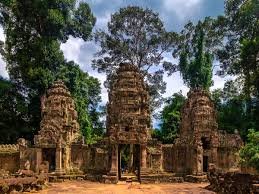
.jpg)
That era is over. The rise of the electric bicycle has fundamentally redefined travel here. E-Bike Vietnam Cycling Holidays offer a revolutionary path, making the country’s most challenging and breathtaking routes, such as the legendary Ha Giang Loop and the Ho Chi Minh Trail, fully accessible to riders of all fitness levels. The E-Bike transforms the journey from a feat of pure endurance into an immersive cultural and scenic delight, allowing you to achieve a profound feeling of conquest while channeling your energy into savoring the profound closeness to nature and the genuine warmth of the local communities.
October 06, 2025
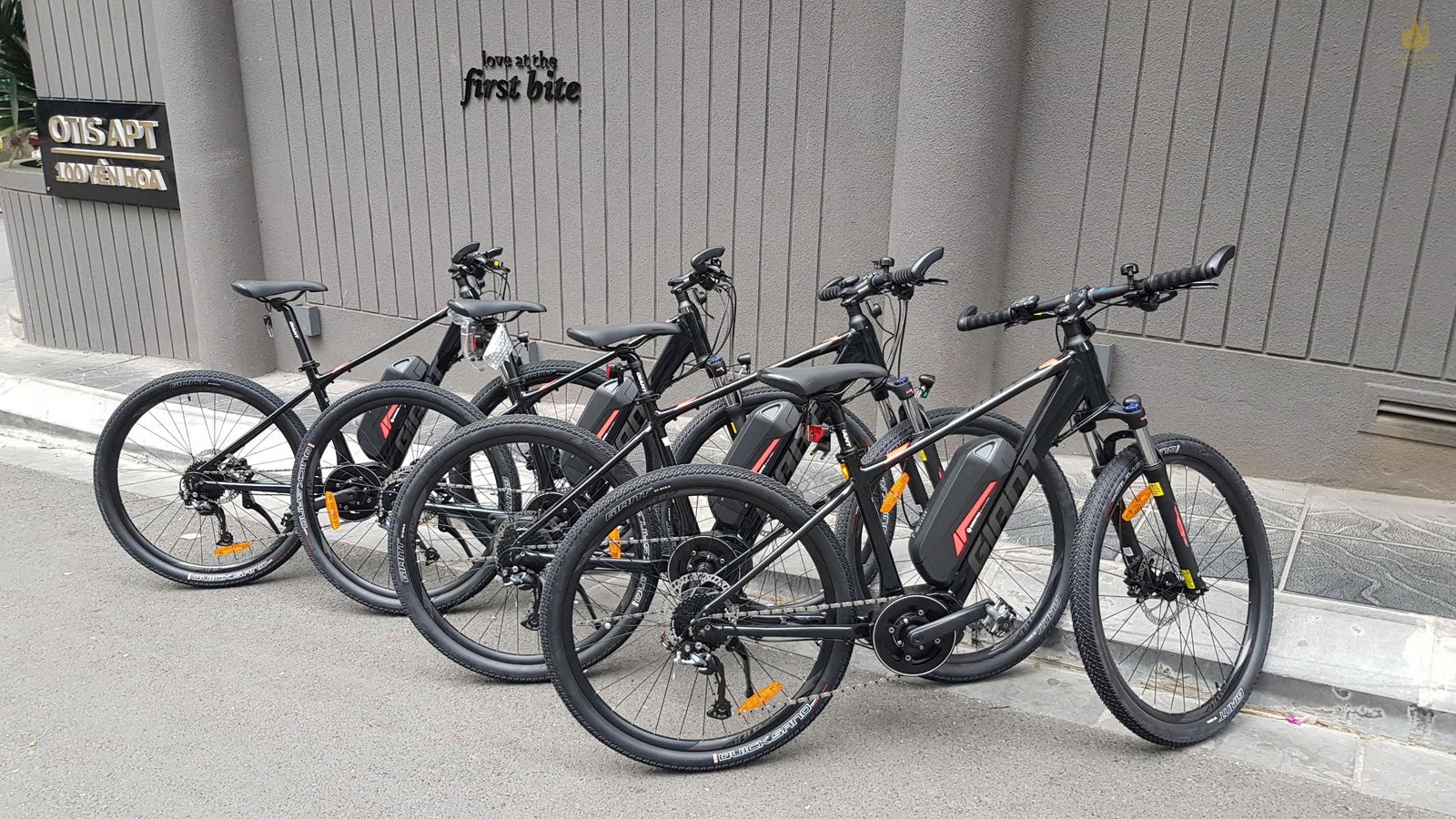
Vietnam, a country famed for its spectacular mountain passes, lush rice terraces, and complex network of historic trails, has long been a dream destination for cyclists. Yet, its challenging geography—characterized by scorching heat, punishing humidity, and immense vertical climbs—often reserves the most breathtaking routes for only the fittest elite. This barrier has now been shattered. The advent of E-Bikes Cycling Vietnam has democratized the adventure, making the country’s most remote and beautiful landscapes accessible to riders of all ages and fitness levels.
October 06, 2025
.jpg)
For the dedicated gravel cyclist, Southeast Asia represents the pinnacle of mixed-terrain exploration. While individual countries offer stunning challenges, the true masterpiece lies in combining them. The cross-border adventure spanning Gravel bike riding in Vietnam and Laos is an unparalleled journey, seamlessly blending the soaring karst mountains of Northern Vietnam with the quiet, forested plateaus and historical trails of Laos.
October 06, 2025
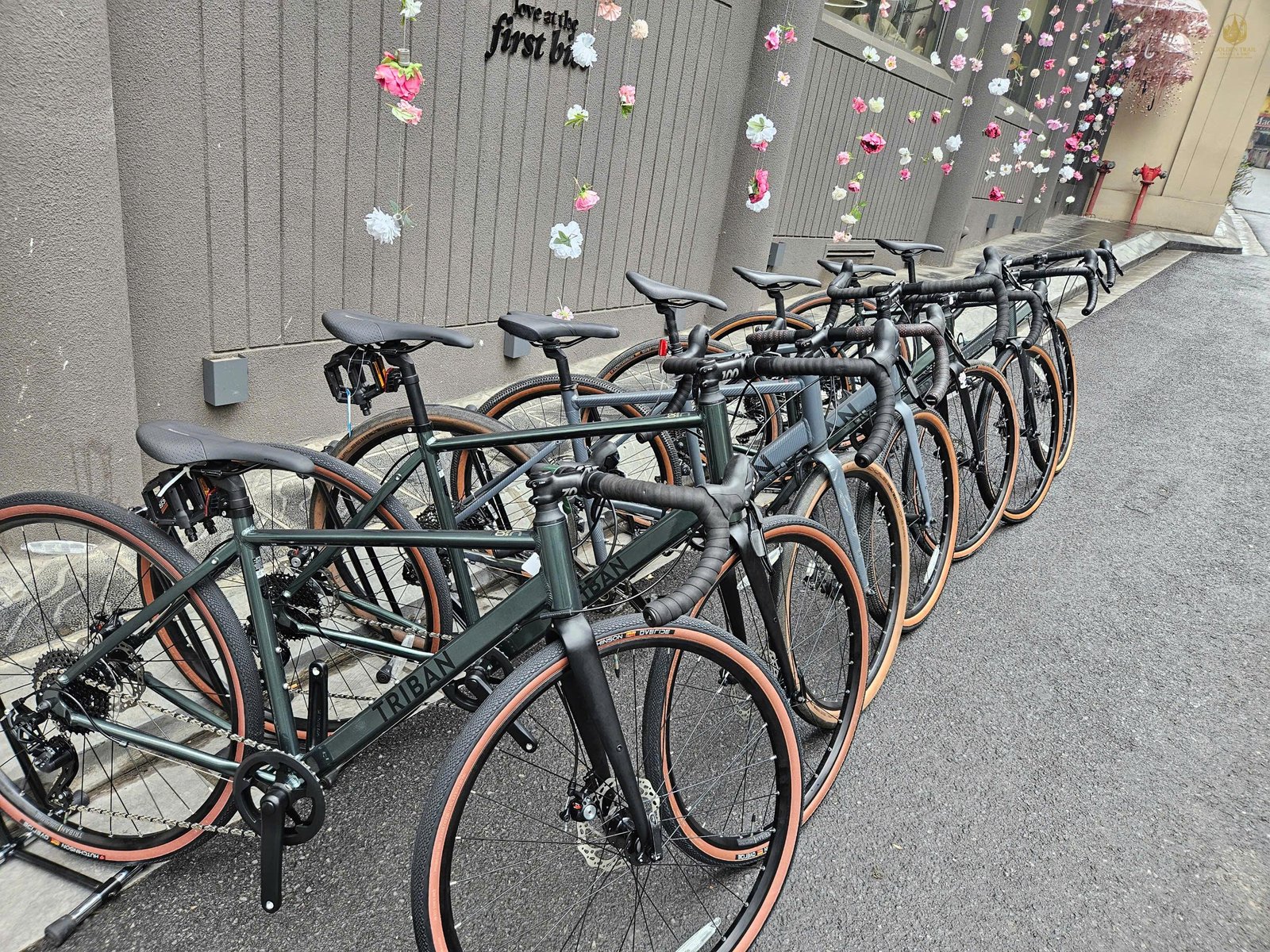
The Ho Chi Minh Trail (HCT)—Đường Trường Sơn in Vietnamese—is more than just a route; it is a legendary tapestry woven from history, endurance, and raw, untamed landscape. While many know the HCT as a symbol of wartime resilience, today it represents the ultimate pilgrimage for the modern adventurer. Forget crowded highways and tourist buses
October 06, 2025

Vietnam is not merely a destination; it is an epic, sensory overload, a land waiting to be discovered inch by inch. While motorbike journeys and bus tours follow the predictable highways, the true soul of this nation—its quiet valleys, timeless hamlets, and untamed mountains—is revealed only to those who dare to take the dirt road.
October 06, 2025

What to Bring on a Vietnam Bike Ride? It is important that the clothing you take on your cycling tour is appropriate for the trip you have chosen. There is a fine balance between taking too much and too little, especially considering that you need to equip yourself for differing levels of physical exertion and also for a range of climatic conditions.
September 09, 2025
.jpg)
Discover the magic of a Vietnam cycling holiday. Explore breathtaking landscapes, immerse yourself in local culture, and embark on an unforgettable adventure through mountains, coastlines, and deltas. Book your dream cycling trip today.
September 05, 2025
.jpg)
Embark on an unforgettable bicycle tour in Vietnam. Explore breathtaking landscapes, immerse yourself in local culture, and experience the ultimate cycling adventure through mountains, coastlines, and deltas. Book your dream bike trip today.
September 05, 2025
.jpg)
Embark on an unforgettable bike tour in Vietnam. Explore breathtaking landscapes, immerse yourself in local culture, and experience the ultimate cycling adventure through mountains, coastlines, and deltas. Book your dream bike trip today.
September 05, 2025
.jpg)
Discover the magic of a Vietnam cycling tour. Explore breathtaking landscapes, immerse yourself in local culture, and embark on an unforgettable adventure through mountains, coastlines, and deltas. Book your dream cycling trip today.
September 05, 2025
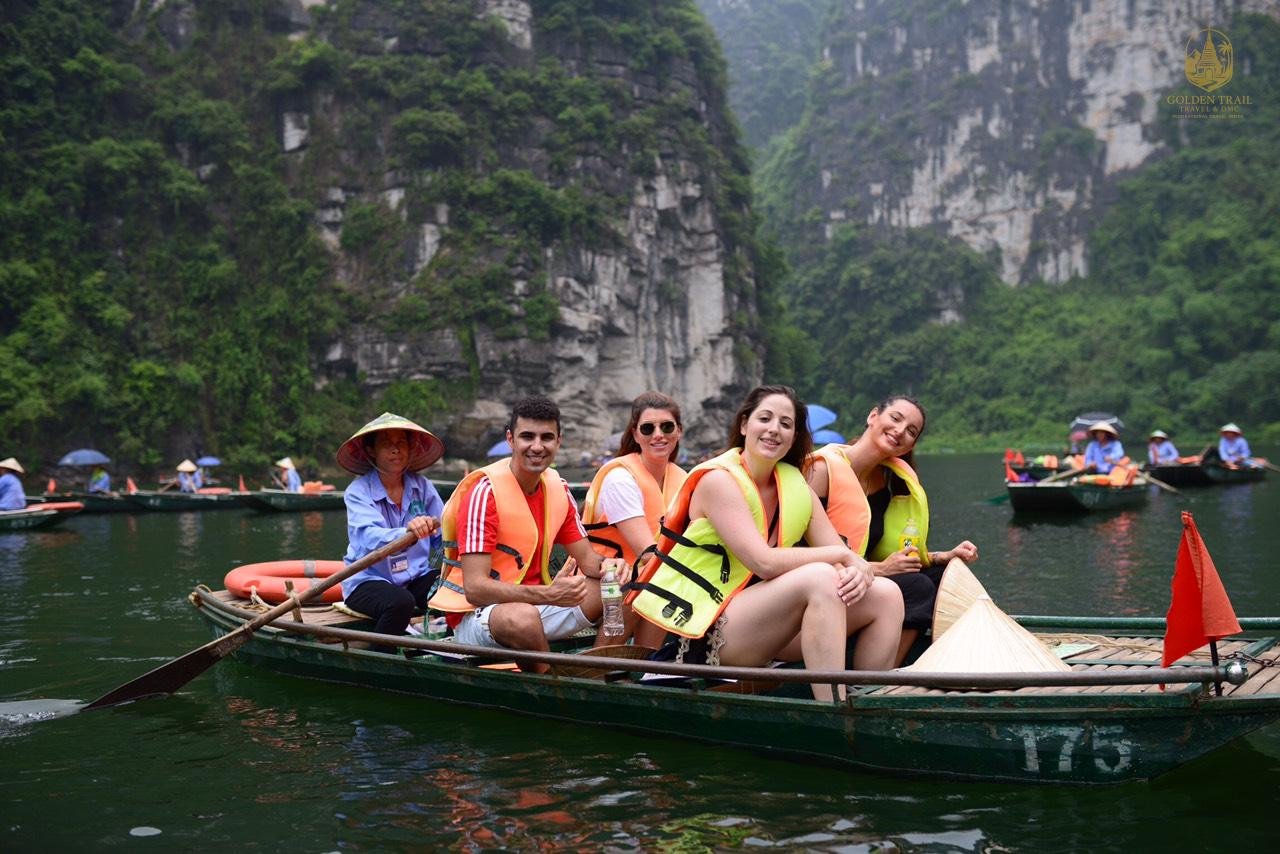
Embark on a serene Ninh Binh boat tour and discover the "Halong Bay on land." Glide through mystical caves and stunning limestone karsts in Tam Coc, Trang An, and Van Long. Book your unforgettable journey with Golden Trail Travel & DMC
August 29, 2025
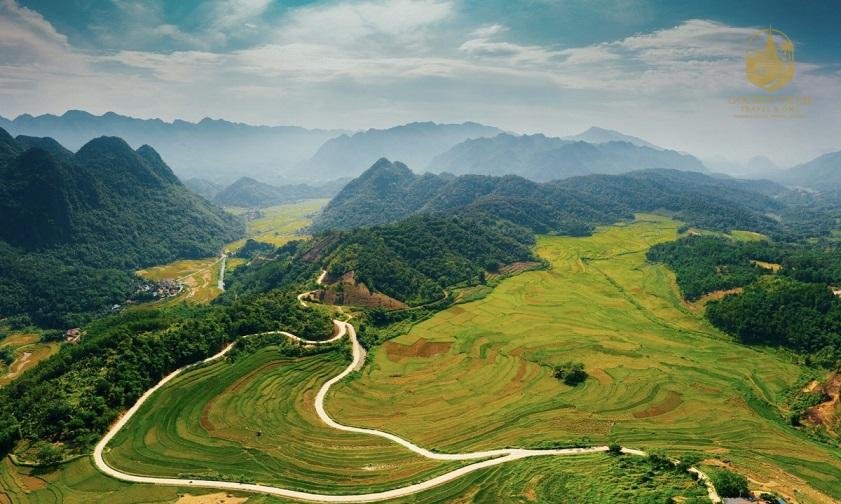
Discover the serene beauty of Pu Luong valley. Trek through lush terraced fields, experience authentic local life, and witness breathtaking landscapes. Book your Pu Luong tour with Golden Trail Travel & DMC.
August 29, 2025
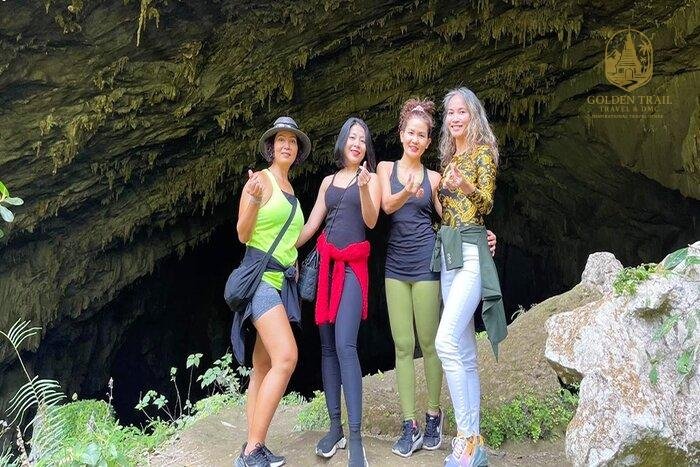
Journey into the heart of Pu Luong to Kho Muong Cave. Trek through stunning landscapes, explore a magnificent bat cave, and experience an authentic adventure. Book your tour with Golden Trail Travel & DMC.
August 29, 2025
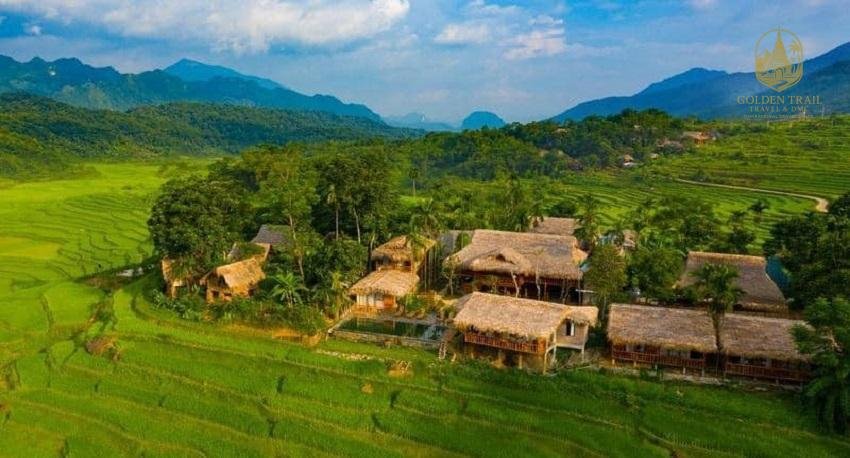
Discover the breathtaking views and authentic culture of Don village in Pu Luong. Trek to its magnificent viewpoints, experience local life, and witness stunning sunrises and sunsets. Book your tour with Golden Trail Travel & DMC.
August 29, 2025
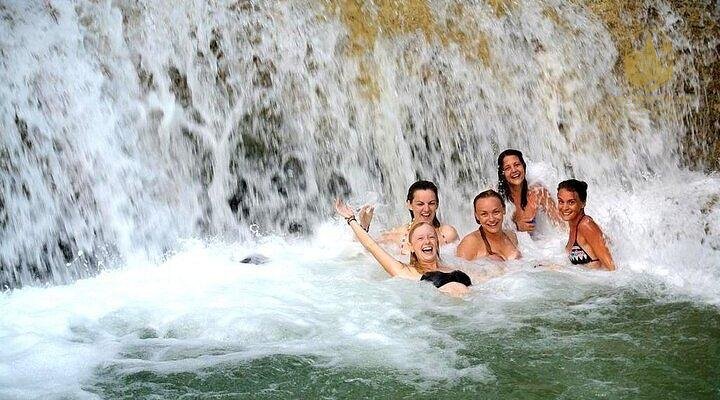
Discover the serene beauty of Hieu village & waterfall. Trek through stunning landscapes, swim in natural pools, and experience authentic local life. Book your adventure with Golden Trail Travel & DMC.
August 29, 2025

Discover the hidden gem of Kho Muong village in Pu Luong. Trek through stunning landscapes, explore a magnificent cave, and experience authentic local life. Book your adventure with Golden Trail Travel & DMC.
August 29, 2025
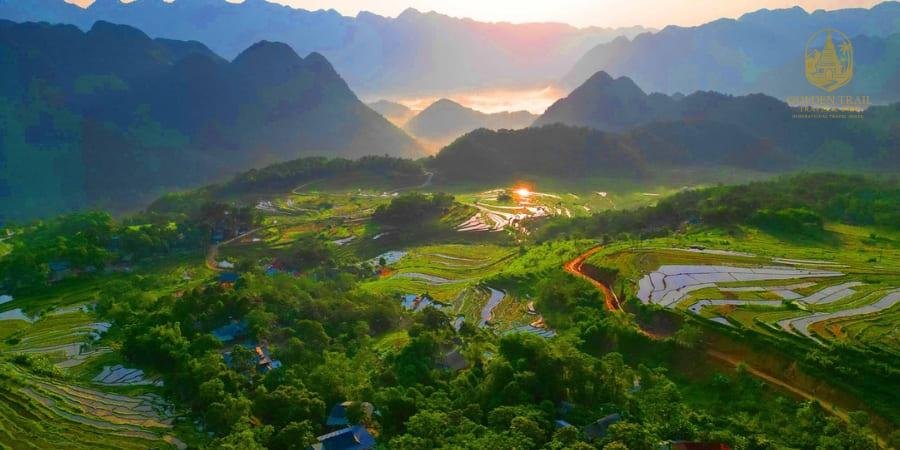
Witness the magic of a Pu Luong sunrise/sunset. Trek to the best viewpoints and experience the breathtaking colors, peace, and natural beauty. Book your Pu Luong tour with Golden Trail Travel & DMC.
August 29, 2025
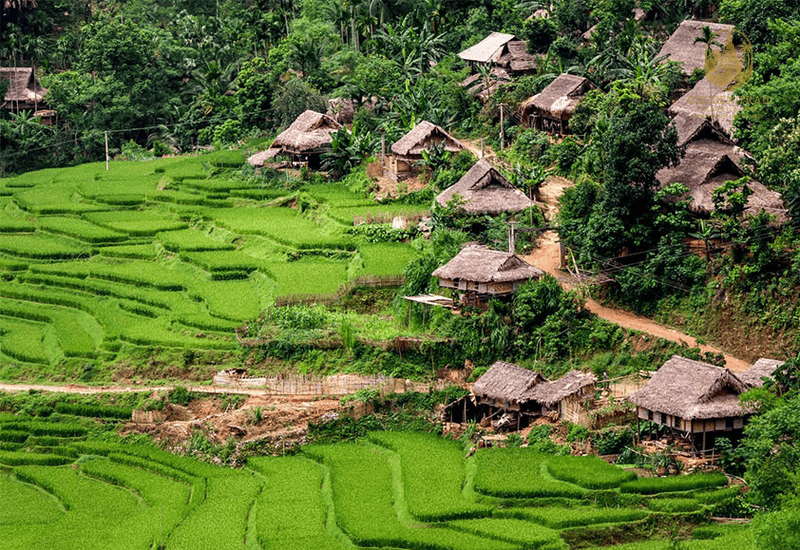
Journey into the soul of Pu Luong. Explore ethnic villages Pu Luong to experience a deep connection with local culture, life, and nature. Book an authentic tour with Golden Trail Travel & DMC.
August 29, 2025
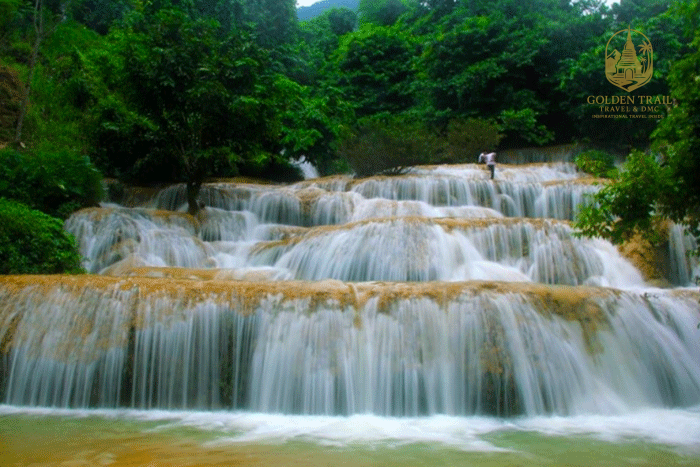
Discover the heart of Pu Luong with a trek to its majestic waterfall. Experience the ultimate journey of peace, conquest, and natural beauty. Book your Pu Luong waterfall tour with Golden Trail Travel & DMC.
August 29, 2025
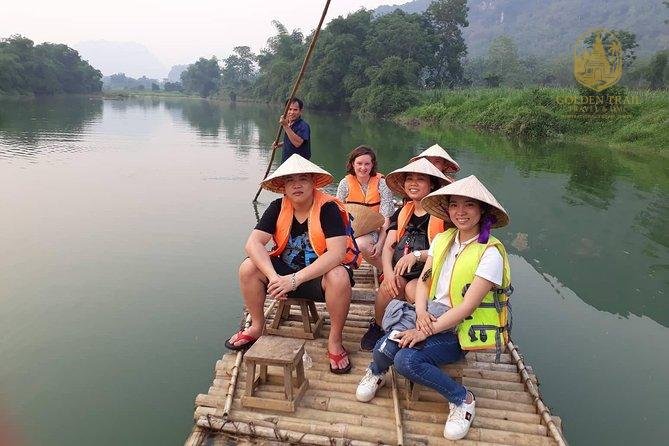
Drift into serenity with bamboo rafting Pu Luong. Discover the tranquility of the Cham Stream, iconic waterwheels, and lush landscapes. Book your unforgettable tour with Golden Trail Travel & DMC.
August 29, 2025